THE BIG DEBATE: ETSY vs SHOPIFY
A Head-to-Head Battle of Seven Fundamental Aspects
Etsy vs Shopify: Fees
When you’re considering a suitable home for your online store, consider the platform’s fees. Too many fees or pricey fees can eat into your profits if you want to make your products more “affordable.” One of the reasons many small business owners aren’t getting the profits they would like is because they aren’t considering the fees they’ll pay and how that will eat into their gross profit.
Shopify has a comprehensive list of fees. This includes:
Basic Shopify Plan:
In-person credit card fee: 2.7% + $0.30
Online credit card fee: 2.9% + $0.30
Other transaction fees: 2%
Shopify Plan
In-person credit card fee: 2.5%
Online credit card fee: 2.6% + $0.30
Other transaction fees: 1%
Advanced Shopify Plan
In-person credit card fee: 2.4%
Online credit card fee: 2.4% + $0.30
Other transaction fees: 0.5%
Etsy’s fees amount to more than Shopify’s. Sellers pay a 5% transaction fee on the listing price of their product. If products are sold in-person using a POS, you’ll pay Etsy’s 5% transaction fee in addition to Square’s transaction fees.
For advertising, Etsy offers off-site advertising, which they may choose to enroll your business. For sellers making less than $10,000 in sales a year, they can opt-out, however, for sellers making more than $10,000 a year, there isn’t that option. These off-site advertising fees are 15% for sellers making less than $10,000 in annual sales and 12% for sellers making more than $10,000 in annual sales. Etsy only deducts these fees if you make a sale from an off-site ad.
Lastly, there’s a 2.5% currency conversion fee. If you choose to list your products in a currency other than the currency for your payment account currency, you’ll pay the 2.5% currency conversion fee.
Overall Winner: Shopify
Etsy vs Shopify: Exposure
As a creator who’s about to launch their online store, you need to consider how the platform you choose is going to bring exposure to your work. Unless you have the budget for advertising and a pro-team of marketers, trying to get exposure as a brand new business is all but impossible.
Shopify allows you to integrate with Google Shopping or promote your store through Google ads at an additional fee. But, once again, you’ll need expert knowledge on marketing to see legitimate results.
In contrast, Etsy enables you to display your products in an ever-growing marketplace. Therefore, when more sellers join the platform, there’s greater product diversity, and the more variety available, the more buyers will join.
This is beneficial for you as a seller because you gain access to buyers in your target market without having to invest in market research or a marketing budget. Additionally, Etsy may choose to display your products in off-site ads. If your products are purchased because of these ads, they’ll deduct a fee from the purchase price. In this regard, Etsy simplifies the process of gaining exposure.
Overall Winner: Etsy
Etsy vs Shopify: Customization
For creatives, having an aesthetically appealing online store is #goals. For that reason, being able to customize every aspect of your store may be something you may want to spend time doing, so people can see your brand voice and message.
Shopify is most likely one of the most customizable eCommerce platforms in existence. They have themes, widgets, and CSS customization that enable you to change the appearance of your store so it’s more to your liking. You can hire a Shopify pro, choose to purchase a theme, or use a free theme and customize colors and fonts to your liking.
Etsy is essentially a marketplace of stores. Etsy is the digital equivalent to a market or fair, which you can describe as a digital mall for handcrafted products. Although you can customize your store and certain elements of your store, because you’re in a building that’s owned by someone else, you can’t do much. You’ll always have Etsy’s branding on your store because you can only change certain aspects of your store like your header and store logo.
Overall Winner: Shopify
Etsy vs Shopify: Pricing
Irrespective of the amount you have to spend on your online store, keeping to a strict budget is integral to ensuring long-term, sustainable growth. Therefore, you need to examine the pricing of your preferred platform. Because when you’re launching an online store, charges accumulate quickly.
Shopify has three primary plans and one supplementary plan. The primary plans start at $29 for basic Shopify features, and the more advanced features begin at $299 a month. If you only want store buttons, however, you can opt for Shopify lite that begins at $9 a month.
Remember to include the price of a domain and the renewal thereof into the yearly cost of a Shopify plan. For example, for the basic plan, you’ll pay $348 a year plus $13 for a .com domain purchase and renewal. Bringing your annual cost to $361.
Etsy only requires you to pay a mere $0.20 fee for a single listing. You’ll be able to list 2,320 products on Etsy for the same amount you’ll pay for an annual subscription to Shopify’s basic plan. Remember, Etsy listings remain active for four months, so it’s $0.05 per month/per product. You also don’t have to pay any fees until you choose to publish your listing.
Overall Winner: Etsy
Etsy vs Shopify: Customer Support
In the world of online retail, time is money. So when you need help, you’d like help instantly. You want a solution to a problem and a comprehensive answer to your question without any difficulties.
Shopify gives you everything you need in one step. Yes, you first have to navigate through their help center, but if your answer isn’t there you can choose to contact them via live chat, email, and Twitter. They usually respond within 24 to 48 hours.
Getting answers and solutions from a customer representative on Etsy isn’t as simple. Firstly, you have to be a member of the platform to get answers from customer support. Even then, you won’t get a human response but an automated message that gives you the same information available in their help center. This message will be verbatim what you just read in the help center. After that, you have an extra hoop to jump through: they ask you to respond to that email if they haven’t addressed your concerns.
Overall Winner: Shopify
Etsy vs Shopify: Scale
Scale is the only way to achieve growth. You may start off selling one ethically created vegan handbag. Scale means you’ll create five next, then one hundred, ten thousand, and then branching out to ethically sourced homeware and other products. That’s scale. The point of scale is that you never outgrow your current setup.
Shopify gives you room to grow. Sites like Penguin Books, Red Bull, and GymShark use Shopify to sell their products. Showing you how much growth the platform can handle.
GymShark is an international sportswear brand that started as a simple screen printing business, they’ve used Shopify since their inception. Although they’ve grown to include an international audience and loyal buyers from across the globe. If Shopify could be an excellent base for their products even after accomplishing that level of growth, it’s an ideal solution for businesses that want to scale.
Etsy can also handle scale. Planner Kate, one of the most popular stores on the site, has over one million transactions to date. But, even at this level, there’s not much room to customize beyond Etsy’s basic features. While Etsy can handle growth, there may come a time when you feel as though you’ve outgrown the platform and need more control over how your store functions.
Overall Winner: Shopify
Etsy vs Shopify: Community
Creatives are often inspired by the community around them. Getting feedback, ideas, discussing, or venting their frustrations to like-minded people. This community can be essential to maintaining your mental wellbeing when you’re first launching your online store.
Shopify isn’t big on community. There is a community forum, but that’s to find answers from other store owners or moderators. There isn’t much camaraderie among sellers because sellers sell a variety of items through Shopify, so there isn’t any common ground.
Etsy, however, has a strong seller community. This is one reason why they don’t need a very active customer service team. Because sellers are eager to share their experiences and advice with others, you can probably find a more comprehensive answer to your question there. Additionally, going to the forums you’ll find wide-ranging resources and information, but you’ll also meet other creatives who understand the joys and struggles of operating a handmade business.
Overall Winner: Etsy
Winner: Shopify
So far, Shopify is the winner. Beating Etsy in four of the seven categories in this Etsy vs Shopify review. Although Shopify is better at customization, scale, fees, and customer support, Etsy still offers sellers plenty of valuable features – one of the best being exposure.
However, this is only part one of the Etsy vs Shopify review. In the second part of Etsy vs Shopify, we’ll cover integration, lifetime value, and initial setup to determine which platform is the better choice.








